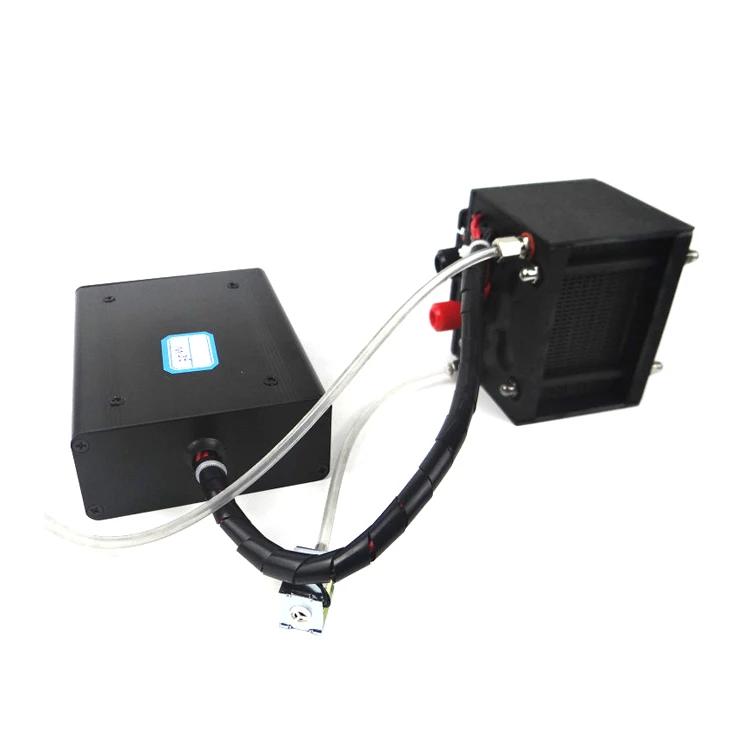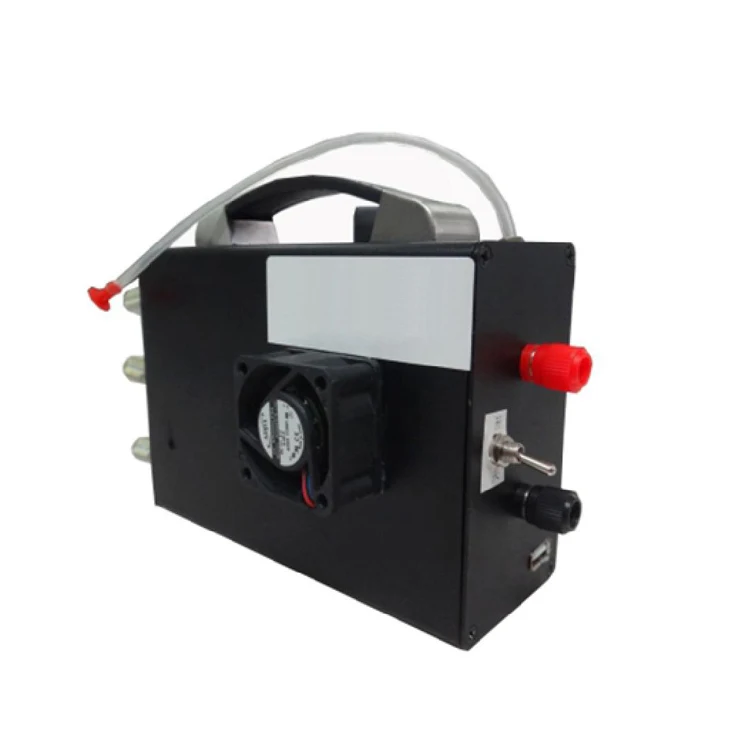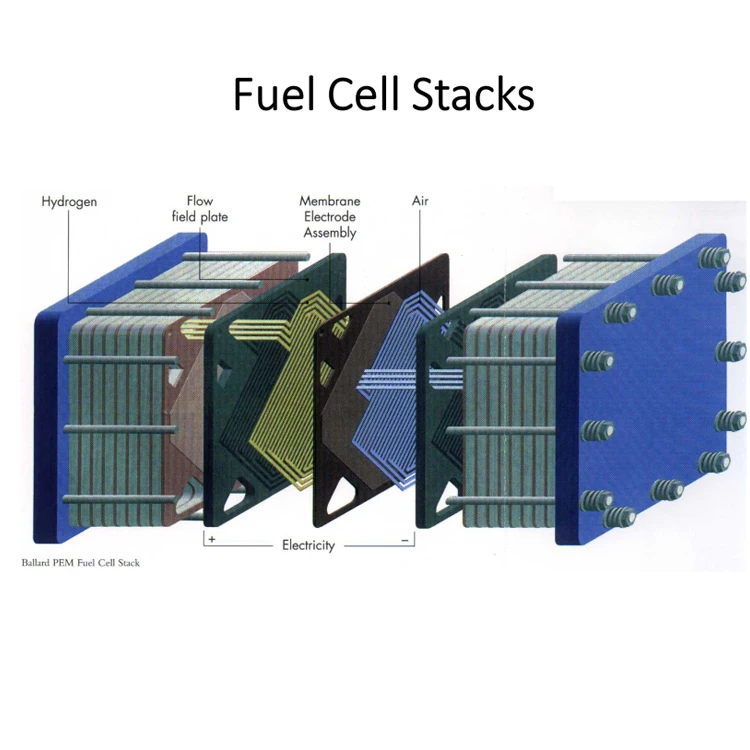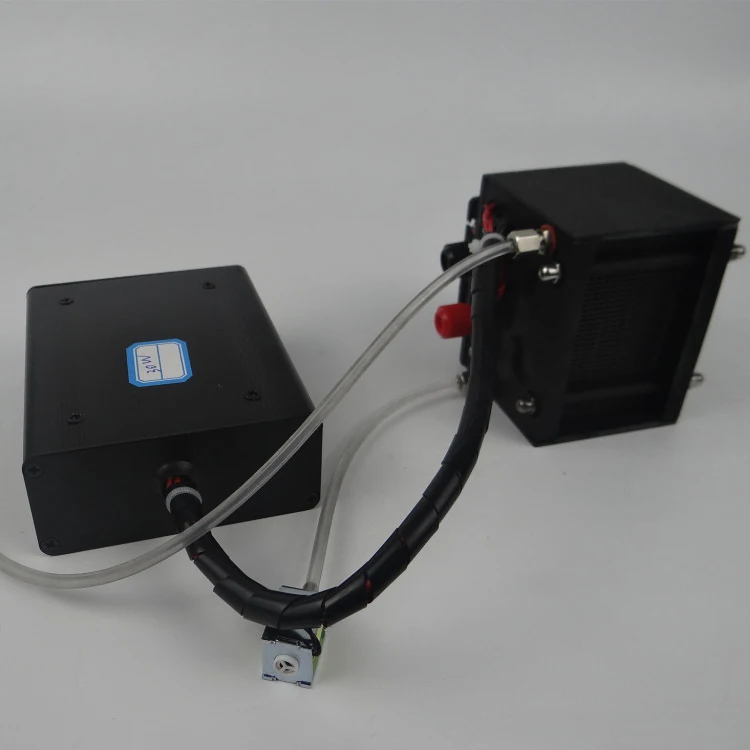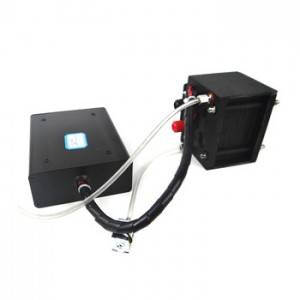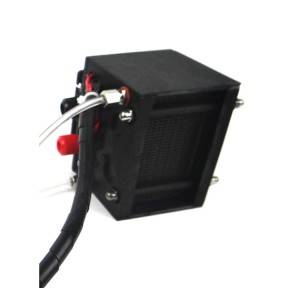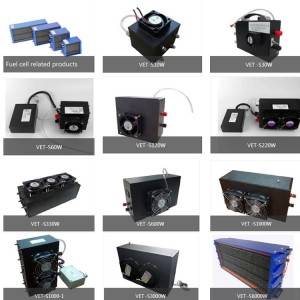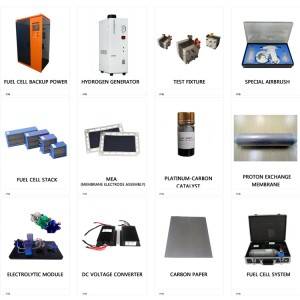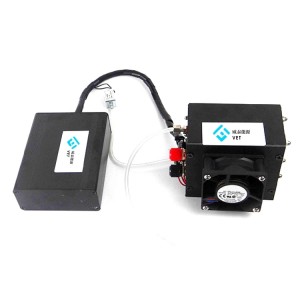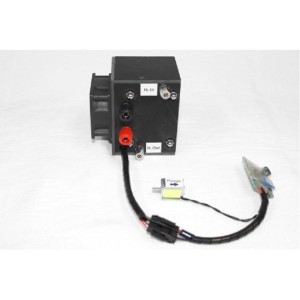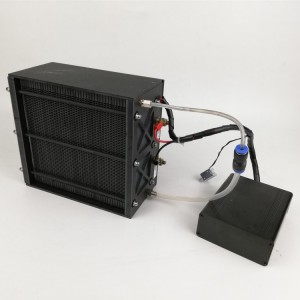A single fuel cell consists of a membrane electrode assembly (MEA) and two flow-field plates delivering about 0.5 and 1V voltage (too low for most applications). Just like batteries, individual cells are stacked to achieve a higher voltage and power. This assembly of cells is called a fuel cell stack, or just a stack.
The power output of a given fuel cell stack will depend on its size. Increasing the number of cells in a stack increases the voltage, while increasing the surface area of the cells increases the current. A stack is finished with end plates and connections for ease of further use.
|
Output Performance
|
|
|
✔ Nominal Power
|
30 W
|
|
✔ Nominal Voltage
|
6 V
|
|
✔ Nominal Current
|
5 A
|
|
✔ DC Voltage Range
|
6 – 10 V
|
|
✔ Efficiency
|
>50% at the nominal power
|
|
Hydrogen Fuel
|
|
|
✔ Hydrogen Purity
|
>99.99% (CO content being <1 ppm)
|
|
✔ Hydrogen Pressure
|
0.04 – 0.06 MPa
|
|
✔ Hydrogen Consumption
|
350 mL/min (at nominal power)
|
|
Environmental Characteristics
|
|
|
✔ Ambient Temperature
|
-5 to +35 ºC
|
|
✔ Ambient Humidity
|
10% RH to 95% RH (No misting)
|
|
✔ Storage Ambient Temperature
|
-10 to +50 ºC
|
|
✔ Noise
|
<60 dB
|
|
Physical Characteristics
|
|
|
✔ Stack Size (mm)
|
70*56*48
|
|
✔ Stack Weight
|
0.24 kg
|
|
✔ Controller Size (mm)
|
TBD
|
|
✔ Controller Weight
|
TBD
|
|
✔ System Size (mm)
|
70*56*70
|
|
✔ System Weight
|
0.27 kg
|
